If I had a box of bismuth cartridges for every time someone has told me that vintage guns are nice but for the amount of shooting they do, you need something modern because “vintage guns just won’t cope with the work”, I’d face the lead-free future with enough shells to see me out.
Time and again, I hear the same thing. Vintage guns are fine for Boxing Day or the odd special event but not good enough for day-in-day-out ‘proper shooting’. Experience tells me this is not the case.
Deciding the best place to demonstrate some vintage guns in action might be a simulated day, being a strong believer that regular ‘trigger-time’ keeps the reflexes and muscle memory in fine tune, and being given the opportunity by Criddle Fieldsports to try out their simulated driven grouse near Macclesfield, I packed some old iron and drove north. My friend Tom came along for the ride, with his old Purdey.
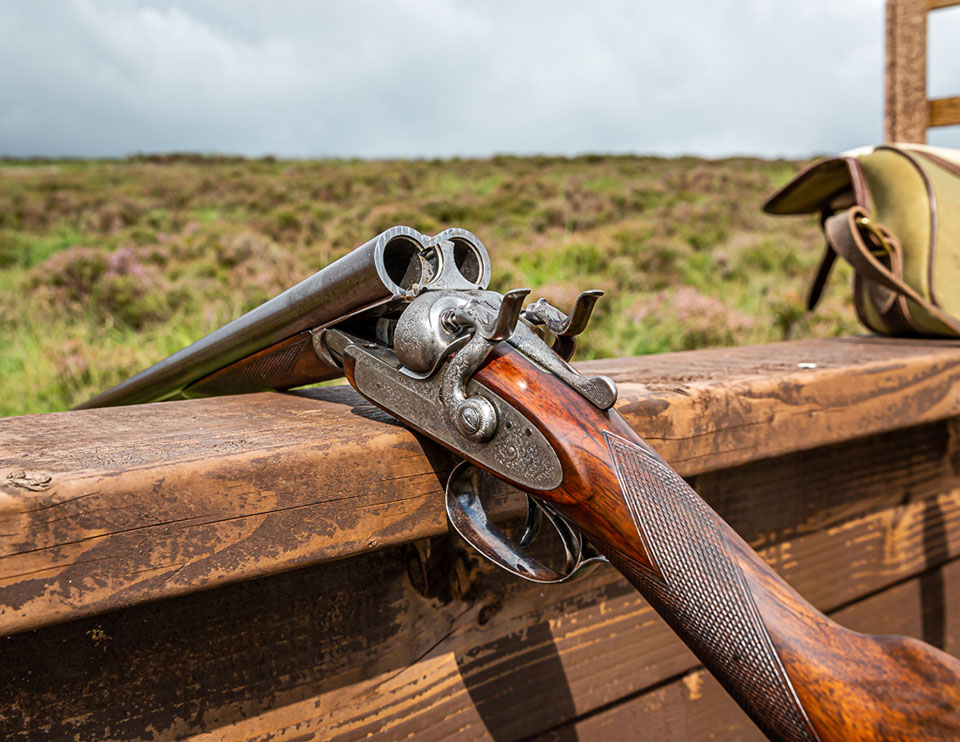
Among the criticisms of old guns I hear:
They can’t cope with the repeated shooting on a hot peg.
They are unreliable.
They are slow to load.
They are fiddly.
I contend:
They are as reliable as modern guns, perhaps more so.
They handle better.
They are not as slow to load as you think.
Any mechanism merely requires practice to become second nature.
The grouse butt is a good test of a gun. Driven grouse demand fast reactions and a gun that is instinctive to get onto a target that may be visible only fleetingly. Packs of grouse put the pressure on to fire and re-load fast. Any issues with a gun are quickly exposed under these conditions.
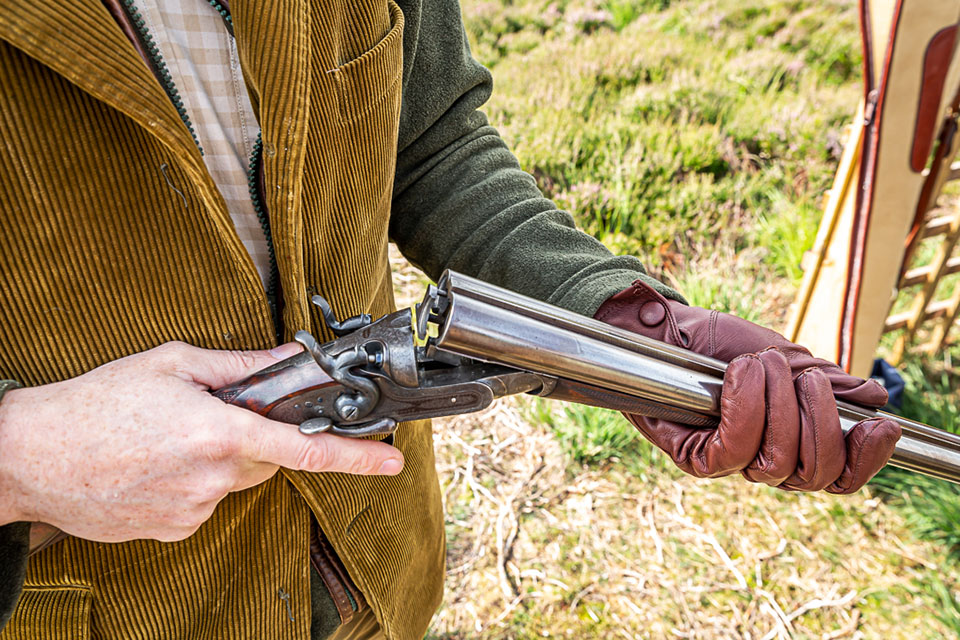
I decided to take:
1. Stephen Grant 1885, 16-bore, side-lever, hammer gun.
2. Thompson 1873, 12-bore, Jones under-lever, hammer gun.
3. W. Thorn, 1874, 12-bore, Jones under-lever, hammer gun.
4. Purdey 1885, 12-bore, top-lever, hammer gun.
Shooting Times sent a photographer and this trial happened in real time, in the company of a group of fellow shooters, using modern guns.
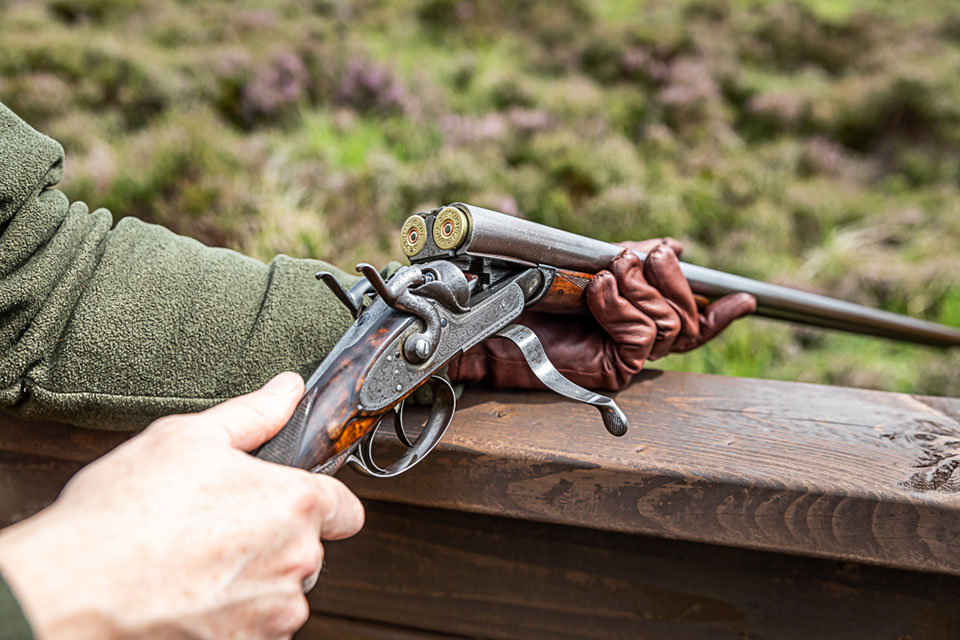
The shooting varied , as does a real grouse day, with but changes ensuring that sone ‘grouse’ were direct incomers at speed, others were crossing the horizon and, on the end butts, long , lone birds slipped down to the left or right. The beauty of clays is that they are plentiful, regardless of the breeding season, which this year has been poor on most moors due to snow in May.
Shooting single gun with a ‘stuffer’, rather than double-gunning with a loader, we kept up a rate of fire that surprised most observers.
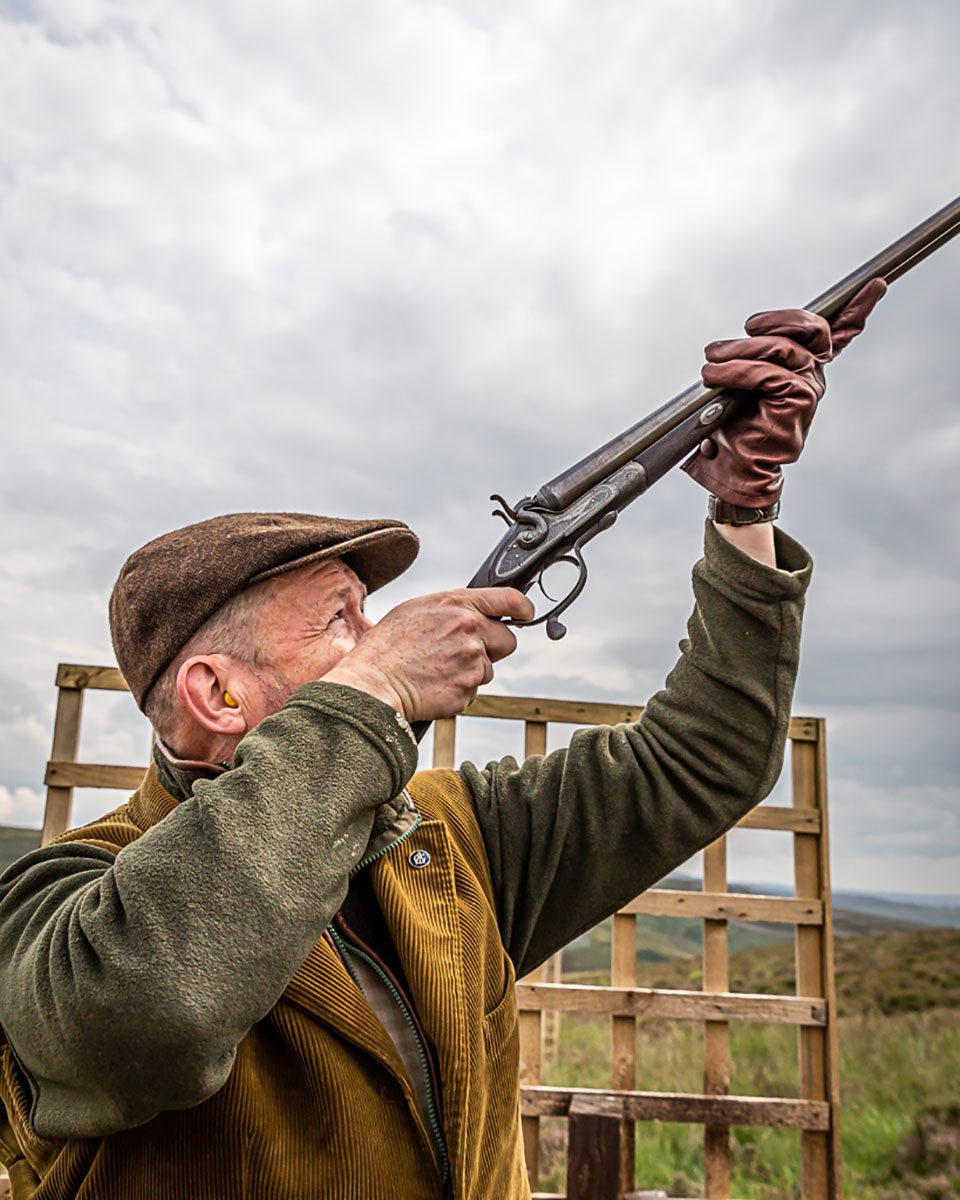
The slowest of the guns was the Thorn, which has non-rebounding locks. Prior to about 1867, it was necessary to move the hammer to two positions during operation. Half-cock, sits the hammer clear of the striker but in a position from which it cannot be fired. This enables the gun to be opened and re-loaded. Without half-cock, the hammer would continue to press the striker into the cartridge cap, effectively bolting the gun shut.
The first move is to pull the hammers back to half-cock, then operate the lever to open the gun and remove the empty cartridge case. The Thorn has a Jones patent rotary under-lever, which is inert, meaning there is no spring to return it to closed automatically when the gun is shut, the shooter has to rotate the lever back to its closed position manually. Once closed, the hammer has to be pulled further back, to full-cock, before it can be fired.
Even this, the slowest of the guns used, was surprisingly effective. In fact, of all the guns used, I think it may be the best grouse gun in the battery. For grouse shooting, I think you benefit from a stock shorter than your usual length. This helps a mount late, shoot fast style. You simply don’t have time to mount the gun and swing or track the target. It has to be sharp focus on the bird, move with it, mount on it and fire as the butt hits the shoulder, moving the gun as you do so. Long stocks get in the way when you shoot like this.
The gun should also be fitted so that it shoots flat; the eye looking straight down the rib, not like many game guns which are set to show a lot of rib and throw 60% of the pattern high. The Thorn is exactly that. Then, a gun with good weight distribution, easy to move and with weight between the hands is a faster, more instinctive gun to shoot than a barrel-heavy over & under.
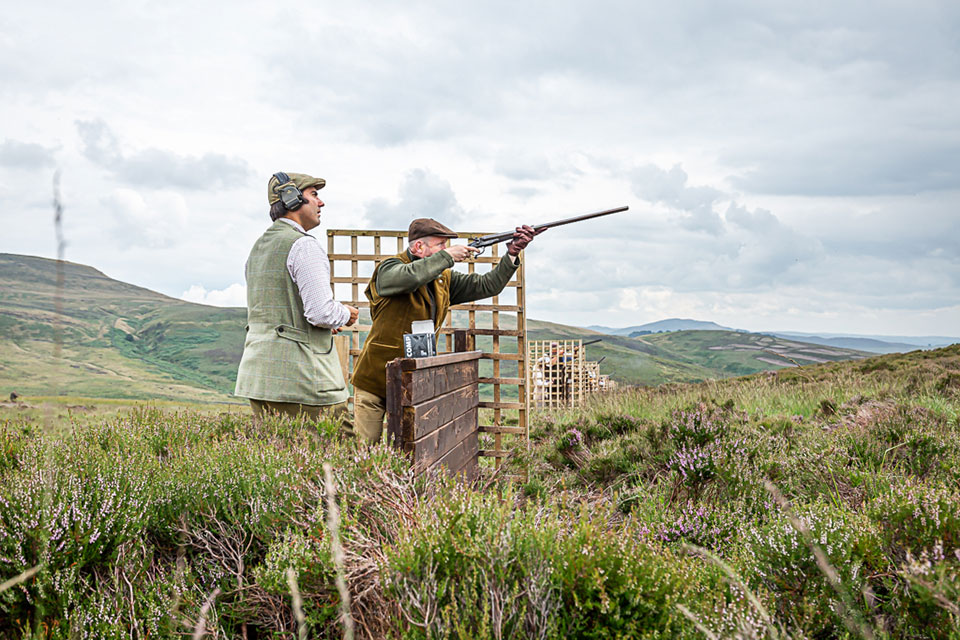
Though the Thorn did well, the next gun was faster still. This was the J. Thompson; the same Jones lever but this time with rebounding hammers, which dispense with the half-cock position, meaning that to open the gun, the shooter just needs to move the lever, no need to touch the hammers. Once re-loaded, the hammer is pulled to ‘cock’ and the gun ready to fire.
Working with a stuffer, the cycle is remarkably fast, gripping the gun in the left hand, the right comes completely off and moves under the gun, flicking the lever to the right, then tilting the muzzles slightly upwards, the right hand pulls the two spent shells out and they fall to the floor. Tilting the barrels downwards, the stuffer inserts new cartridges, the breech and barrels are lifted together, the lever locked with a quick movement and the hammers cocked as the gun comes up and the eye scans the field for a target.
Like the Thorn, the Thompson dates from the mid-1870s, which is my favourite period for hammer guns. Though the mechanisms are a bit slower and more idiosyncratic, that is part of their charm and the build quality of the best ones is, I believe, as good as, if not better than, anything made since. Finding super-quality gun by relatively unknown and under-appreciated makers is one of the joys of the job.
The other two guns; the Purdey and the Grant, are snap-actions. They share the same bolting system, which is the Purdey bolt of 1863 patent. When the gun is snapped shut after re-loading, it locks closed automatically. Opinions differ about what is faster or easier to operate between the top-lever and the side-lever. I prefer the side-lever. The thumb naturally locates it and pressing down is a more natural movement that turning and pressing sideways. It also negates the drilling of a hole through the back of the action to locate a Scott spindle, leaving it stronger. The lever operates directly on the bolt, from below. Without the necessity to manually return the lever to ‘lock’, these are the fastest of the guns we used.
I don’t think there is any appreciable difference between a snap-action hammer gun, used with a stuffer, and a hammerless ejector. In fact, when I tested them side-by-side using on-report driven targets, the hammerless ejector only managed two shots per minute more then a hammer gun, even when loaded by the shooter.
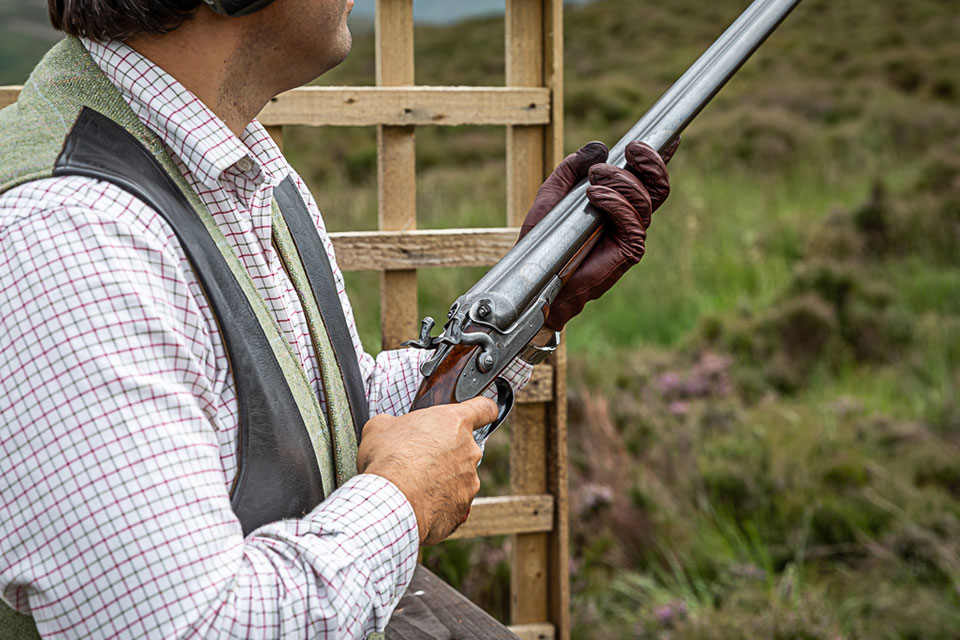
I contend that in a real shooting context today, where we often scan the skyline leaving some lower birds and waiting for a ‘good one’, rather than killing everything, in the way our ancestors may well have done, when numbers were the main thing, in practical terms, there is no disadvantage using a hammer gun.
I can fire twelve shots per minute with the Stephen Grant. If I’m on a driven day firing twelve shots per minute on every drive, it is going to be a pretty expensive one!
Ammunition used in the 12-bores was 21-gram fibre wad, which lessens shooter fatigue when firing upwards of 350 cartridges in four drives. The guns used all weigh between 6lbs 10oz and 7lbs. This helps keep the gun smooth to swing and absorbent of recoil when using punchier game loads. The 16-bore was used with 28-gram fibre wad Eley VIPs, as low weight loads for clays are not available in this gauge at present. At 6lbs 10oz, it is quite heavy for a 16-bore, which is my preference.
Don’t be afraid to use your old guns hard. I do and they have never failed me, even in Africa shooting 300 or more shots a day, every day for three weeks.
Not once have I had a failure in the field.
Published by Vintage Guns Ltd on




